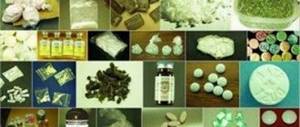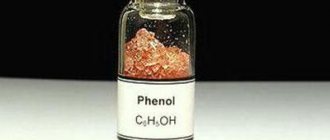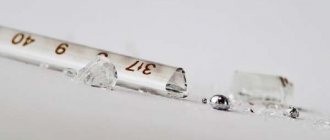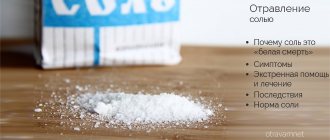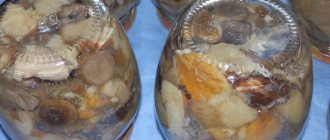Ricin is a plant toxin made from the castor bean plant. Widely used as a poisonous weapon during World Wars 1 and 2. Castor bean is a plant with large palm-shaped leaves, green or light purple in color. The substance contained in the seeds of just one fruit is enough to cause serious poisoning.
Features of ricin
One ricin molecule that enters the body destroys up to two thousand cells in a minute. The poison contained in castor bean seeds disrupts the process of protein synthesis. As a result, the cell initiates the process of self-destruction.
Despite containing a dangerous poison, castor beans are widely used to produce castor oil, which contains the plant's seed. The cold-pressing process allows the beneficial components to be separated from the ricin, leaving the toxic substance in the waste stream.
Ricin was studied as a cure for cancer, but this did not bring clear results.
Ricin poisoning is included in class X40-X49 according to ICD 10.
Where is it located and for what purposes is it used?
Where does castor grow? Its main habitats are China, India, and Bangladesh. However, in Russia you can also often find this plant, because castor oil is a fairly popular medicinal product.
Where is this poison used? Where can I find this substance?
Ricin has not found its use for medical purposes. Although many scientists have tried to use it to produce drugs for oncology.
In most cases, the toxic properties of ricin are used specifically for criminal purposes. Powder or aerosol with such a substance is fatal to humans.
On the Internet you can sometimes come across a question about how to obtain this poison at home. This is possible, but it is always worth remembering that such actions may be considered a criminal offense. Many terrorists have developed their own recipe for making such poison.
Gradual development of symptoms of castor bean poisoning
Ricin is not produced in Russia; the only method of poisoning is consumption of castor bean fruits.
Other options are only available in laboratory conditions.
- Inhalation, inhalation. After a few hours, pulmonary edema occurs. Attacks of severe coughing combined with vomiting are the first signs of intoxication. Trying to remove the poison, the body begins to sweat profusely. Blood pressure drops, the person turns blue, and without emergency medical care, death occurs.
- Contact with mucous membranes of the eyes and skin. It is unlikely to get poisoned this way. Ricin in its pure form is absorbed by the skin only by being absorbed with liquid or by rubbing. There is a sharp pain and burning sensation. After contact with the poison, the eyes turn red and pain begins.
- Entry into the gastrointestinal tract. Occurs when eating plant seeds. For an adult, a dose of ricin contained in four seeds is enough, for a child - one.
Castor bean poisoning produces the first symptoms within ten hours. Depending on the amount of substance consumed, this time can be increased or decreased.
Primary symptoms of poisoning:
- burning of the mucous membranes of the gastrointestinal tract begins;
- feeling of nausea, vomiting, with prolonged exposure - with blood clots;
- abdominal pain, colic;
- diarrhea.
Without emergency assistance, poisoning develops. At the second stage he is accompanied by:
- a sharp drop in blood pressure;
- acrocyanosis - vascular spasm, expressed in bluish skin;
- convulsions;
- depressed state, exhaustion, depression. The poisoned person loses orientation in space and has difficulty reacting to stimuli.
Diagnosis of poisoning
Acute poisoning by the seeds of the castor bean plant is accompanied by the following external signs: redness of the eyes, pallor or cyanosis of the nasolabial triangle.
Clinical picture of damage to internal organs:
- inflammation of the inguinal lymph nodes;
- protein, red blood cells and hemoglobin enter the urine;
- the liver is affected, serious disorders lead to hepatitis;
- disruption of the pancreas and spleen.
- the kidneys cannot cope with the elimination of ricin, the risk of failure is high.
The result of poisoning: severe internal damage, hemorrhages in the gastrointestinal tract, failure of vital organs, toxic dystrophy. Without proper treatment, death occurs within seven days.
Information sources:
Alf. index: 1-9 AZ
More on the topic:
- RICIN - chemical encyclopedia
First aid
According to applied toxicology, the effect of ricin is six times stronger than potassium cyanide. Instant death does not occur only due to insufficient concentration of the toxic substance under natural conditions. After diagnosing poisoning and even before sending a person to the hospital, it is important to take emergency step-by-step first aid measures.
- It is necessary to urgently remove the poison from the body. To do this, the victim needs to drink a lot of water, induce vomiting, and then take activated charcoal. One tablet is used for every ten kilograms of body weight. The drug Almagel received positive reviews.
- The next step is to protect the stomach walls. The enveloping film is created by jelly, rice and rolled oats boiled in a large amount of water. A starch solution will do.
- To remove toxin from the intestines, you must take a laxative.
- To mitigate the effects of ricin on the kidneys, take a solution of soda: ten grams in half a glass of water.
Polonium-210
Polonium is a rare and highly radioactive element that is present in uranium ore. Polonium-210 is approximately 250 thousand times more toxic than hydrocyanic acid (hydrogen cyanide), a concentrated dose of which quickly kills.
Alexander Litvinenko
Litvinenko is a former officer of the Russian FSB, who in 2000 received political asylum in London with his family. Litvinenko was poisoned with tea in November 2006 in a London sushi bar. An autopsy revealed that his body contained traces of polonium-210. British radiation experts believe Alexander is the first person in history to die from the acute radiation effects of polonium-210. However, he was initially diagnosed with thallium poisoning.
Shortly before his death, Litvinenko wrote a letter in which he stated that Putin had given the order to kill him. The London High Court confirmed that these suspicions were well founded.
Litvinenko blamed the FSB for the bombings of residential buildings and other terrorist attacks in Russia: they were supposed to strengthen Putin’s rating and give him more power. Russian officials completely deny these accusations. Litvinenko also blamed Vladimir Putin for the death of Russian journalist Anna Politkovskaya, who was shot two months before Litvinenko himself died.
Download Adobe Flash Player
Embed Share
Litvinenko's last press conference: “Politkovskaya was killed by Putin”
Embed Share Code copied to clipboard
- Share on Facebook
- Share on Twitter
The URL has been copied to your clipboard
No media source currently available
0:00 0:00:33 0:00
Download
- 270p | 1.2MB
- 360p | 1.6MB
- 720p | 4.3MB
Further treatment
After emergency medical assistance is provided, the victim is taken to the hospital. In the hospital, the gastrointestinal tract is washed.
To remove the toxin that has managed to penetrate into the blood, the patient undergoes hemodialysis.
When the threat of death has passed, a thorough diagnosis of the body’s condition after ricin poisoning is carried out. The damage caused to organs is assessed, and the most rational method of further treatment is determined.
Painkillers are used - morphine. Against the background of unbearable pain, preference is given to narcotic analgesics.
To restore normal kidney function, diuretics (diuretics) are prescribed: furasemide, triamterene, spironolactone.
Consequences and precautions
Ricin has a destructive effect on the body. The lack of an antidote makes rapid detoxification impossible. After its exposure, a comprehensive examination of the patient is necessary to assess the functions of the internal organs. Constant monitoring by a doctor is required for a long time. There is a high risk of the following complications:
- the consequences of intoxication risk leading to toxic hepatitis;
- acute inflammation of the intestines and stomach. Without proper care, it becomes chronic;
- impaired functioning of the pancreas threatens a lack of insulin and other enzymes;
- moderate damage to the urinary system.
Since serious poisoning can only occur through accidental consumption of castor bean seeds, precautions boil down to avoiding contact with its fruits.
Children who are not informed about the dangers of handling unknown plants are at risk. They must know what dangers unfamiliar berries and fruits pose.
In different cities of the country, there are rumors among children that eating castor bean seeds causes hallucinations.
If there is a need to destroy castor beans, their fruits and seeds, burning is suitable. Ricin decomposes at temperatures above 90 degrees, neutralizing in fire. You can’t just throw the plant away - there is a risk of poisoning pets who consume it as food.
People who are interested in traditional medicine know about the existence of such a plant as castor bean. This representative of the flora contains ricin, which can harm the human body if used incorrectly. So what is ricin and why is it so dangerous?
Ricin is a specific poison that is of natural origin. It is found in all parts of the castor bean, which makes this plant especially dangerous. If you accidentally swallow its seeds, you can cause significant irritation.
Tetrachlorodibenzodioxin (TCDD) – “Dioxin”
TCDD is a colorless and odorless solid compound; very often it is mistakenly called “dioxin”. TCDD is the main component of Agent Orange, a mixture of chemicals used by the United States during the Vietnam War to kill vegetation. The Cancer Research Agency has classified this substance as carcinogenic.
Victor Yushchenko
Ukrainian politician Viktor Yushchenko was poisoned with a toxic amount of TCDD in late 2004 during his presidential campaign. Then he competed with the pro-Russian candidate Viktor Yanukovych.
Due to the high levels of TCDD in his body, Yushchenko's face was disfigured by chloracne (an acne-like skin lesion due to contact with chemicals). The politician survived.
Yushchenko, who advocated European integration and Ukraine's entry into NATO, accused Russian officials of obstructing the investigation into his poisoning.
According to official estimates, Yanukovych won that presidential election. His victory was one of the reasons for the start of the Orange Revolution in Ukraine. Later, the Supreme Court ruled that the elections were held with numerous violations and ordered new elections, which Yushchenko won.
General information about ricin
This toxic substance is also produced from the waste that remains after castor beans are processed. It can be obtained during the production of castor oil. Although ricin poisoning poses a significant health risk, the substance is relatively easy to decontaminate. To do this, use plain water or a low concentration acid solution.
From a chemical point of view, ricin is classified as a stable substance under normal conditions. If necessary, it is inactivated using elevated temperature. Its value should exceed 80 degrees Celsius.
Castor bean is considered a plant that can be found in different parts of the world. This is also confirmed by the fact that different countries are able to independently produce castor oil without the need for imports. In production, ricin is the part of the waste mass that was used to make castor oil.
Castor bean oil is sometimes used to activate processes in the body to fight cancer cells.
The toxic effect of ricin depends entirely on how the poison entered the body. This can be by inhalation, ingestion with food, or ingestion artificially - directly into the blood.
Castor bean belongs to the group of annual bushy plants. Its characteristic features are called:
- stem height up to three meters;
- variety of stem colors from green to red;
- large green feathery leaves;
- small flowers during the flowering period;
- spherical spiked capsule with seeds;
- mite-shaped seeds.
Because of its attractive external qualities, the plant is used as a decorative element in the design of local areas. But the use of castor beans as an element of landscape interiors also has disadvantages - an increase in cases of ricin poisoning among children.
Castor beans are grown en masse for only one purpose - to obtain medicinal castor oil. It is obtained through a cold pressing process. As a result, all harmful substances remain in the screened cake, and the oil becomes safe.
In addition to the spent cake, castor beans also contain ricin in their seeds. Despite the fact that there is some poison even in the stems or leaves, only seeds are taken to analyze clinical cases.
The mechanism of action of the poison is based on preventing the production of proteins by cells. Because of this, the body experiences an acute protein deficiency, which contributes to the rapid death of cells.
Potassium cyanide
Potassium cyanide is one of the fastest killing poisons known to mankind. It may be in the form of crystals and a colorless gas with a "bitter almond" odor . Cyanide can be found in some foods and plants. It is found in cigarettes and is used to make plastic, photographs, extract gold from ore, and kill unwanted insects.
Cyanide has been used since ancient times, and in the modern world it has been a method of capital punishment. Poisoning can occur through inhalation, ingestion and even touching, causing symptoms such as seizures, respiratory failure and, in severe cases, death , which can occur within minutes. It kills by binding to iron in blood cells, making them unable to carry oxygen.
The main methods of poisoning
To find out the characteristic symptoms of intoxication, it is necessary to immediately establish how the poison entered the body:
- inhalation,
- orally,
- through the skin and eyes.
In particularly serious situations, mixed routes of entry are possible. They will lead to accelerated development of events, affecting the functioning of vital groups of organs.
If toxic components enter through the respiratory system, the substance can make itself felt even four hours after contact. When taking seeds or cake as food, the effect will be visible approximately 10 hours after consumption.
- cough,
- fever,
- heaviness in the chest area.
Delaying the provision of qualified medical care at this stage can even lead to pulmonary edema. This happens due to the rapid accumulation of fluid in the lungs. An additional confirmation of edema is a bluish tint of the skin.
To accurately determine the extent of damage to the lungs, the victim must undergo an x-ray examination. If it is not possible to carry out the procedure urgently, the doctor will use a stethoscope to listen to noises.
The only good news here is the fact that in ordinary life it is not possible to get poisoned by ricin through inhalation. The reason lies in a number of conditions that must accompany the poison when it is inhaled. All causes and effects of a hypothetical inhalation infection were recreated exclusively in laboratory conditions.
If ricin enters the digestive tract, the patient will exhibit the main signs of typical food poisoning. The patient will suffer from vomiting and diarrhea, which will later turn bloody.
Against the background of low blood pressure, a person will experience severe dehydration. Sometimes it is accompanied by bloody spots in the urine. If the poisoned person is not helped, then after a while his kidneys and spleen will fail.
Exposure through the skin or organs of vision is no less dangerous. But this type of intoxication is less common than oral intoxication. Typically, when contacting ricin powder without personal protective equipment, a person will experience:
- skin redness,
- painful sensations,
- pain in the eyes.
But sometimes, if careless, the patient can scratch the affected area, and some of the powder accidentally gets into the nose or even mouth. If the dosage was impressive, then death can occur within a couple of days after contact with a dangerous drug.
Botulinum toxin
Many poisons can be lethal in small doses, so it is quite difficult to single out the most dangerous one. However, many experts agree that botulinum toxin, which is used in Botox injections to smooth out wrinkles, is the strongest .
Botulism is a serious disease leading to paralysis caused by botulinum toxin, which is produced by the bacterium Clostridium botulinum. This poison causes damage to the nervous system, respiratory arrest and death in terrible agony.
Symptoms may include nausea, vomiting, double vision, facial weakness, speech impediments, difficulty swallowing, and others. The bacterium can enter the body through food (usually poorly canned foods) and through open wounds.
Primary symptoms of intoxication
To prevent castor beans from harming the body, you need to be able to correctly and timely identify poisoning by them.
Often, the development of intoxication with this poison of plant origin occurs within 15-20 hours. If ricin enters the bloodstream through the respiratory system, the process may begin earlier. An immediate reaction of the body can be observed only if the patient has an allergy.
You should be wary of the following symptoms:
- intestinal colic;
- burning sensation on mucous membranes, including inside the body;
- nausea with vomiting;
- loose stools with bloody impurities.
One of the most characteristic signs of possible damage by ricin is considered to be hemorrhages - this is what doctors call hemorrhages. They can be traced on the retina of the eyes.
A little later, more severe symptoms are added to the listed signs:
- convulsions,
- cyanosis,
- pressure drop,
- feeling of prostration.
But even with such signs, not everyone is in a hurry to go to the hospital. If you delay this, the patient will inevitably die. It occurs due to severe damage to the liver and spleen. The stomach and intestines are also affected, subject to constant hemorrhages. The clinical picture ends with renal dystrophy. Castor beans also have an effect on the pancreas.
During hospitalization and diagnostics, red blood cells are detected in the patient’s urine. The analysis will also show the presence of hemoglobin, protein and casts in the urine. And upon examination of the lymph nodes in the abdominal cavity, abnormalities typical for intoxication will be detected.
Batrachotoxin
Fortunately, the chances of encountering this poison are very small. Batrachotoxin, found in the skin of tiny dart frogs, is one of the most potent neutrotoxins in the world .
Frogs themselves do not produce poison; it is accumulated from the foods they consume, mainly small bugs. The most dangerous levels of poison were found in a species of dire frog that lives in Colombia.
One specimen contains enough batrachotoxin to kill two dozen people or several elephants. The poison attacks the nerves, especially around the heart, making breathing difficult and quickly leading to death .
First aid and subsequent treatment
The main danger that ricin poses to the ordinary population is the lack of an effective antidote. Because of this, doctors use standard treatment measures for common poisonings.
First of all, you need to stop the process of poison absorption. To do this, you should follow all the points from this instruction:
- Give the patient a few glasses of boiled water with a suspension of activated carbon.
- Give the patient a slimy drink. For this, regular jelly, rice or flaxseed broth is suitable.
- Provide peace.
After the patient is sent to a hospital for treatment, he will be provided with complex therapy there. The fact that the substance has large molecules can add to the problem. This prevents the kidneys from quickly getting rid of it. To speed up this process, the victim must undergo the following measures:
- pressure restoration;
- alkalinization of urine to prevent hemoglobin sedimentation;
- taking enveloping drugs;
- enemas and laxatives;
- blood transfusion.
But standard methods like hemodialysis are not suitable here. If the patient has severe pain, he is prescribed morphine and atropine. Oxygen therapy is considered an adjuvant.
Gelsemium – “heart attack grass”
One of the main poisonous components of this venom is Gelsemium elegans or "heart attack grass", a rare plant species that is found only in Asia, mainly China. Gelsemium poisoning is one of the most popular methods among Russian and Chinese contract killers.
Alexander Perepilichny
Alexander Perepilichny was a Russian oligarch and often criticized the Kremlin. He was granted asylum in the UK in 2009 and later helped Swiss prosecutors investigate money laundering among Moscow officials. He was one of the main purveyors of incriminating evidence against Russian high-ranking officials related to the death of lawyer Sergei Magnitsky in 2009 in a Moscow prison.
In 2012, Alexander died suddenly while jogging near his home in Surrey. He was 44 years old and shortly before his death he underwent a medical examination, which did not reveal any health problems.
Also, shortly before his own death, Perepilichny told his colleagues that he had received threats, and they turned out to be real. During the autopsy, experts found traces in the body of the 44-year-old businessman that could indicate Gelsemium Elegans poisoning.
The oligarch became the fourth person linked to the Magnitsky case to die under mysterious circumstances, and local police said the circumstances of his death were suspicious from the very beginning. The investigation believes that Perepilichny could have been poisoned, for example, because he helped uncover tax fraud among representatives of law enforcement agencies and the origin of millions of Russian officials in Swiss banks.
Consequences of ricin intoxication
Despite the promptness of medical care, the poisoned person will still suffer from the consequences of intoxication to varying degrees. The degree of harm will vary depending on the duration of exposure of the poison to the organs and the individual characteristics of the body.
Most often, the stomach and intestines are targeted by poison. They become victims of hemorrhagic inflammation, which gradually develops into a chronic form. To smooth out this, the person is prescribed a special diet.
Other possible consequences of poisoning are:
- problems with bile production;
- toxic hepatitis;
- failure in the production of pancreatic enzymes.
If you provide help in a timely manner, you can minimize the consequences for the cardiovascular and urinary systems.
Unidentified poisons
Hafizullah Amin
Amin was an Afghan politician during the Cold War. In 1979, on his orders, the pro-Soviet President Nur Muhammad Taraki was killed. But Amin himself served as president for only three months. Soviet leaders, suspecting the politician of collaborating with the CIA, decided to poison him at the end of 1979.
Fortunately for Amin, at the last moment he refused the food, which was poisoned by a KGB agent. Instead of Amin, his son-in-law was poisoned. But just two weeks later, the president was shot dead by Soviet troops during the storming of the Kabul palace. The new president was a protégé of the USSR, Barak Karmal.
Anna Politkovskaya
Russian journalist, human rights activist and Kremlin critic Anna Politkovskaya was seriously poisoned in September 2004 after drinking tea on an Aeroflot flight. The journalist was flying to Beslan, where terrorists were holding hostages in a school at that moment. Politkovskaya believed that the FSB was behind the poisoning. According to press reports, an unknown toxin was added to the tea, prepared in one of the secret chemical laboratories of the Soviet era. Two years later, Politkovskaya was shot dead in the entrance of her own house in Moscow.
Another poisoning by castor bean seeds (April 2020).
- fever
- vomit
- Nausea
- Severe cough
- Abdominal pain
- diarrhea
- dehydration
- Flu symptoms
- Signs and symptoms usually begin within 4-6 hours of exposure to the toxin. Death may occur between 36 and 72 hours of exposure.
- The resulting symptoms depend on the amount of toxin and the method by which the individual was exposed.
- There are no antidotes or vaccines available for ricin poisoning.
- It does not have any treatment or prophylactic vaccine.
- It is easy and inexpensive to produce, highly toxic and stable in aerosol form.
- The use of this type of poison for terrorist attacks has been documented both in the United States and in other countries.
- If exposed to an inhalation aerosol, it will likely affect many people at the same time. In this case, a group of people will exhibit similar symptoms for a short period of time, usually within 8 hours after inhalation. Such an event indicates the possibility of intentional action. People exposed to this may experience fever, nausea and vomiting, a progressively more severe cough, and congestion in the nose and throat. Other symptoms associated with ricin inhalation include difficulty breathing and chest tightness. With significant exposure to the poison, breathing difficulties occur within 12-24 hours. A chest x-ray may reveal excess fluid in the lungs.
- When exposed to contaminated food or drink, symptoms may initially mimic food poisoning, usually within 6 hours of ingestion. People who ingest it may have abdominal pain, often accompanied by vomiting and diarrhea. This can also cause them to become dehydrated. Although ingestion of ricin is generally less toxic than exposure through inhalation, significant amounts of poison result in more severe symptoms and possibly death. Dehydration is common. If the dose has been sufficient and the disease has progressed, vomiting blood or passing bloody diarrhea or dark spotty stools may occur.
- People who have been injected with ricin, either in granule form or with it dissolved in a liquid, may experience pain and swelling at the injection site. They may experience other flu-like symptoms such as nausea, vomiting and body aches. More severe symptoms will appear later and a critical life-threatening syndrome will occur. The skin at the injection site is examined for swelling and redness. The affected area may experience pain. The skin is also examined for the possibility of retaining a foreign object. Physical changes on the skin may occur before or during other flu symptoms.
Very small amounts of ricin are lethal. In fact, it is much stronger than cyanide. An amount as small as a grain of table salt can be enough to kill an adult if ingested, inhaled or injected. This poison works by preventing proteins from forming cells; if the body's cells cannot make protein, they will eventually die. A person is killed when the cells that make up vital organs stop functioning.
Symptoms depend on the route of exposure and amount of absorption. Possible routes of absorption include respiratory (inhalation aerosol), gastrointestinal (GI (ingestion)), and injection (dermal).
A person can die from ricin poisoning by injection approximately 36 to 72 hours after exposure. The type of exposure also determines the speed, severity and type of symptoms that will develop.
Diagnosis of an aerosol attack or contamination of food and water by this poisoning mainly depends on symptoms and the likelihood of such exposure. In cases of isolated injection of ricin, diagnosis is extremely difficult. Additionally, diagnostic testing is of limited value because there are no definitive, widely available medical tests that can confirm the effects of the venom. However, in the event of possible exposure, the patient will likely undergo a full physical examination by a physician. Sophisticated diagnostic tests (not widely available) can identify ricin in the body up to 24 hours after exposure. Please see the section on signs and symptoms for information on early symptoms.
There is no antidote or vaccine. Regardless of the route of exposure, treatment remains largely favorable.
- If inhaled, the person may need assistance breathing. If it is particularly severe, the person exposed may need to be intubated and use a ventilator.
- If the stomach is swallowed, pumping (eg, gastric decontamination) may be necessary. Super-activated charcoal can also be given to help absorb the poison. Intravenous fluids may be given to treat dehydration.
Antibiotics have no role in treating ricin poisoning because it is not an infectious condition.
- Medicines may be prescribed to treat seizures and low blood pressure, which are sometimes associated with exposure to the venom.
- If exposed to ricin by injection, antibiotics may serve to prevent secondary infection. Tetanus immunization may also be given as a precaution.
The only effective prevention against biological attack with ricin is prevention. Unfortunately, there is no antidote or vaccine. Research is currently being conducted into possible vaccines and ricin inhibitors. Face shields have been shown to be effective in preventing toxicity during an aerosol attack.
Depending on the dose and route, death may occur within 36-72 hours of exposure time. If death does not occur within 3 to 5 days of exposure, recovery is possible.
If you think you have been exposed to ricin, you should seek medical attention as soon as possible.
- If there are people in the area where it was released and people may have been exposed, they should immediately leave the area and move to an area with fresh air.
- If near the area where it was released, wait for emergency personnel to advise you of appropriate evacuation procedures.
- When exposed to aerosol attack, use protective masks that are effective in preventing toxicity.
- To avoid possible contamination if exposed, remove and discard any clothing and wash skin thoroughly with plenty of soap and water. If the affected people's eyes are irritated, the eyes should be irrigated with water.
Although large quantities of ricin would be required to obtain many victims, it would be very effective in a closed environment. It can be distributed as an aerosol, by injection, or as a contaminant in food and water. Its use as a food and water contaminant is a serious problem. If it were used in this way, the resulting mortality could overwhelm local health resources. The classic case of ricin bioterrorism (London, 1978) was when an assassin silenced (killed) dissident Bulgarian writer Geog Markov by knocking a ricin-containing substance into his leg with an umbrella tip.
Even use without casualties can be destructive.
From 1991 to 1997, three cases involving ricin were reported in the United States.
- In Minnesota, four members of the Patriot Council, an extremist group that espoused anti-government and anti-tax ideals and advocated the overthrow of the U.S. government, were arrested in 1991 for plotting to kill a U.S. marshal with him. The poison was produced in a home laboratory. They planned to mix it with the solvent dimethyl sulfoxide (DMSO) and then smear it on the door handles of the marshal's car. The plan was discovered and the men were convicted.
- In 1995, a man entered Canada from Alaska on his way to North Carolina. Canadian officials stopped the man and found him in possession of several guns, $98,000 and a container of white powder that was identified as ricin.
- In 1997, a man shot his stepson in the face. Researchers discovered a makeshift laboratory in their basement and discovered agents such as ricin and nicotine sulfate.
The use of this poison is not limited to the United States.
Local or regional poison control centers can provide more information about ricin. The American Association of Poison Control Centers phone number is 1-800-222-1222.
The US Centers for Disease Control and Prevention (CDC) and the Agency for Toxic Substances and Disease Registries (ATSDR) are additional resources for information materials about ricin and its toxic effects.
Everyone knows castor oil, which is widely used in medicine and cosmetology. Its amazing properties have been used since ancient times to heal wounds and restore skin. Castor oil is extracted from the seeds of the plant - Castor bean (Ricinus communis L). It grows in many countries, including Russia - in zones with a temperate climate.
But few people know that in addition to castor oil, castor bean seeds contain toxic compounds - toxalbumins and alkaloids with a cyano group. These include ricin, a poison of plant origin.
Poisoning with ricin belongs to the group of intoxications with plant poisons. What is ricin, and what effect does it have on the human body? How to recognize castor beans, and in what cases can you be poisoned by ricin?
Sarin gas
Sarin is one of the most dangerous and deadly nerve gases , hundreds of times more toxic than cyanide. Sarin was originally produced as a pesticide, but the clear, odorless gas soon became a powerful chemical weapon.
A person can be poisoned by sarin gas by inhaling or exposing the gas to the eyes and skin. Initial symptoms may include a runny nose and chest tightness, difficulty breathing and nausea .
Then the person loses control over all functions of his body and falls into a coma, convulsions and spasms occur until suffocation occurs.
Ricin and castor bean
Castor bean is an annual bushy plant. The height of the stems reaches two and even three meters, their color is varied - green, red, brownish. The leaves are large, pinnate, green, located alternately on the stem on long petioles. Castor bean blooms with beautiful small flowers collected in racemose inflorescences. The fruits look like a red spherical box with thorns. The box contains seeds; in appearance they resemble ticks, which is where the plant got its name. Castor bean looks beautiful, grows quickly and is often used as an ornamental plant in landscape design. In addition, it is grown as an agricultural crop to obtain castor oil. It is produced by cold pressing, as a result of which all hazardous substances remain in the cake.
Origin of the substance
A natural source of the toxic substance is a medicinal, but at the same time poisonous plant called castor bean. The main use of the annual shrub is the production of castor oil. The poison is obtained from production “waste” - processed castor beans. Beans themselves, as well as plant derivatives that are produced on an industrial scale and end up on the shelves of pharmacies where they are sold without a prescription, are completely harmless to human health. But damaged seeds pose a serious threat to the life of the animal or person who ingests them.
In addition to ricin itself, the beans contain a small amount of a similar substance. Ricinin is a separate toxin, but in medical practice, for convenience, poisons are combined under the general name “ricin”.
The source plant of ricin grows throughout the globe. The castor plant is somewhat reminiscent of a palm tree, has large, maple-like leaves, and the seeds ripen in capsules completely covered with thorns. The plant has a bright color, usually red-green or brownish in color. Castor bean is undemanding and pleasant to look at; the plant is often chosen for planting in garden plots for decorative purposes.
Effect of ricin
Ricin poisoning develops after ingestion of very small doses. Thus, the lethal dose for humans is 0.003 mg of pure substance per kg of weight, which corresponds to eating 6 castor bean seeds for children and 20 for adults. When administered intramuscularly under experimental conditions, the lethal dose for mice is 0.0075 mg/kg, for cats 0.0002 mg/kg, for dogs 0.0006 mg/kg.
Properties of ricin in its pure form:
These are odorless white crystals, soluble in water;
The poison does not penetrate the skin; it acts only when ingested or through injection. Cases of castor bean poisoning occur quite often, so the toxic properties of the poison have been well studied. In laboratories, ricin is used to provoke cancer in experimental animals.
The effect of ricin occurs at the cellular level. Penetrating into cellular structures - ribosomes, the toxin disrupts protein synthesis and, accordingly, the functioning of the cell as a whole. A curious property of ricin has been proven - by splitting into subunits, it can form bonds with molecules of other toxins or polypeptides, resulting in a new toxic compound not found in nature.
Biochemistry
The mechanism of toxic action of ricin involves inhibition of protein synthesis by ribosomes. There are two main types of such inhibitors: type 1 inhibitors are a single polypeptide chain with enzymatic activity, and ricin and other type 2 inhibitors consist of two polypeptide chains and are heterodimeric glycoproteins. Of these, only chain A has enzymatic activity, and chain B, connected to it by disulfide bonds, exhibits activity characteristic of lectins and mediates the penetration of the toxin into the cytosol. For the toxin to inactivate the ribosome, the disulfide bond between chains A and B must be reduced[2].
Structure
The ricin molecule is a glycosylated globular heterodimer weighing 60-65 kDa. The masses of chains A and B are approximately equal: 32 and 34 kDa, respectively.
- Chain A
is an N-glycosidase and consists of 267 amino acid residues[3]. Three structural domains, consisting of alpha helices and beta folds, form a cleft in which the active site is located[4]. - Chain B
is a lectin, consists of 262 amino acid residues, binds galactose residues on the cell surface [5]. Forms a bilobed structure, devoid of alpha helices and beta folds, each lobe is divided into three subdomains, one of which contains the active center. Many plants, such as barley, contain proteins similar to the A chain, but in the absence of the B chain they are not toxic.
Penetration into the cytosol
The ability of ricin to penetrate the cytosol depends on hydrogen bonds formed between amino acid residues of the B chain and oligosaccharides on the cell surface containing galactose or N-acetylgalactosamine residues. In addition, mannose residues contained in ricin can be bound by mannose receptors on the cell surface[6]. It has been shown that up to 106−108 ricin molecules can bind on the surface of one cell[7]. Once bound, the molecules are internalized into both clathrin vesicles and non-clathrin-containing transport vesicles, such as caveolae and vesicles formed during macropinocytosis[8][9]. This is how ricin enters endosomes and then into the Golgi apparatus. Although ricin passes through lysosomes along this route, it is not subject to degradation[10], and from the Golgi apparatus enters the endoplasmic reticulum intact.
It is known that in order to exhibit a toxic function, ricin must disintegrate into A- and B-chains, but where this occurs, in the endoplasmic reticulum or in the cytosol, is still unknown [11]. The mechanism existing in the cytosol for purifying excess protein by ubiquitination also does not work on ricin, since there are not enough lysine residues in its structure to attach ubiquitin [12].
Ribosome inactivation
It has been shown that chain A cleaves the glycosidic bond at the adenine residue at position 4324 of the 28S subunit rRNA[13][14]; this residue is located in the conserved sequence 5'-AGUACGAGAGGA-3', called the sarcin-ricin loop, which is important for the binding of elongation factors [15], as a result of which protein synthesis on the ribosome is completely and irreversibly blocked. The action of chain A does not stop here; each molecule of this enzyme disables up to 1500 ribosomes per minute.
Symptoms of Ricin Poisoning
In cases of ricin poisoning, symptoms develop within 15 to 24 hours. If poisoning occurred by inhaling a toxin, then symptoms may appear earlier - after 4-8 hours. In an allergic reaction, symptoms develop immediately after contact with the poison.
- burning sensation on the mucous membranes of the gastrointestinal tract;
- nausea, vomiting;
- diarrhea, often bloody;
- intestinal colic.
A characteristic sign of ricin poisoning is hemorrhages (bleeding) on the retina of the eye.
In severe cases, the following symptoms develop:
- convulsions;
- cyanosis;
- collapse (sharp drop in blood pressure);
- prostration.
Death occurs after 6–8 days due to severe damage to the liver and spleen, extensive hemorrhages in the stomach and intestines, and toxic kidney dystrophy. The pancreas is severely affected. Red blood cells, hemoglobin, protein and cylindrical cells appear in the urine. Characteristic changes are found in the lymph nodes of the abdominal cavity.
When it comes into contact with the skin, ricin does not have any negative effects. After contact of ricin powder with mucous membranes, burning, redness, watering or stinging in the eyes is possible. You should consider the possibility of poison getting ingested, for example, if it was left on your hands and then you ate or smoked.
Poisoning by inhalation does not occur under practical conditions. The situation was recreated in laboratory conditions, and the size of the aerosol particles must be of a certain size - too large droplets settle in the upper respiratory tract, small ones come out back with exhaled air.
Thallium
Thallium is a chemical element found in potassium minerals and sulfide ores. Small, non-toxic amounts of thallium-201 are used for nuclear medicine examinations.
Poisonous thallium salts are used in rat poisons and insecticides. A side effect of thallium poisoning is hair loss. Due to the fact that it is one of the common poisons, it is called the “poisoner’s poison.”
Nikolay Khokhlov
Khokhlov was a Soviet KGB agent who defected to the United States in 1953 and testified about KGB operations. In 1957, Khokhlov was treated for thallium poisoning in Frankfurt, Germany, after the KGB made an unsuccessful assassination attempt on a former employee.
Some former KGB officers claim that Khokhlov was poisoned not with thallium, but with polonium, just like Litvinenko in 2003.
Yuri Shchekochikhin
Yuri Shchekochikhin was a Russian journalist known for his investigations, as well as a deputy of the Yabloko party. He spoke out against corruption and the spread of organized crime in Russia.
Shchekochikhin died in July 2003. A few days before the meeting with FBI investigators in the United States, the journalist suddenly fell ill with an unexplained illness with symptoms of a severe allergic reaction.
According to the conclusion of the forensic examination, the cause of Shchekochikhin’s death was severe general intoxication, expressed in Lyell’s syndrome (a variant of allergic bullous dermatitis). All medical research records and autopsy results remain classified in the FSB archives.
“In two weeks (Shchekochikhin) turned into a very old man, his hair fell out in clumps, almost all the skin came off his body, one by one his internal organs failed,” recalls Sergei Sokolov, deputy editor-in-chief of Novaya Gazeta.
According to journalists, the symptoms of Shchekochikhin’s disease are similar to those of Khokhlov and Litvinenko.
First aid and treatment
There is no antidote for ricin. In case of poisoning with this toxin, general measures should be taken to prevent further absorption of the poison and the victim should be immediately taken to the hospital.
First aid is provided as follows.
- Give 2-4 glasses of water with a suspension of activated carbon to drink.
- Take a mucous solution inside - rice or flaxseed broth, starch, jelly.
- Give 5-15 grams of sodium bicarbonate (baking soda) to support the kidneys.
In the hospital, the victim’s stomach is washed with a solution containing a suspension of activated carbon.
In addition to the fact that there is no antidote for ricin, this substance has a large molecule size and, therefore, is poorly excreted by the kidneys. Standard methods of cleansing the body - forced diuresis and hemodialysis - are ineffective in case of poisoning with castor bean seeds. Measures are taken to remove poison from the intestines, symptomatic and supportive treatment:
- restore blood pressure;
- alkalinization of urine is carried out to prevent precipitation of hemoglobin in the kidneys;
- Enveloping drugs are given orally to take;
- laxatives (magnesia) and deep enemas to cleanse the intestines;
- blood transfusion;
- for severe pain, morphine is administered together with atropine.
Oxygen therapy is recommended.
Consequences of ricin poisoning
If ricin poisoning occurs, the consequences can be very negative. The harm caused to the body depends on the degree of exposure of the poison to the internal organs. First of all, the stomach and intestines suffer - acute hemorrhagic inflammation develops, which can become chronic. After recovery, you must follow the diet prescribed by your doctor for some time.
The liver and pancreas are also severely affected. Toxic hepatitis, impaired production of bile, pancreatic enzymes, insulin - this is an incomplete list of possible problems. The kidneys are affected in severe poisoning, when decay products and hemoglobin begin to be excreted through them. With timely medical intervention, the urinary system suffers less than the intestines or liver. Negative reactions from the cardiovascular system, as a rule, pass without consequences.
Let's summarize. Ricin poisoning at home is unlikely, but still possible. This poison is contained in the seeds of the castor bean plant, which is planted for decorative purposes and is also cultivated to produce castor oil. Intoxication occurs when eating seeds: for a child it is enough to swallow about six pieces, for an adult - about twenty. After 6–12 hours, or a maximum of 24 hours, nausea, vomiting, severe abdominal pain, and bloody diarrhea occur. Further, the patient’s condition worsens, convulsions and a drop in blood pressure up to collapse are possible. The victim must be taken to a doctor, where he will receive medical care: gastric lavage, intestinal cleansing, supportive therapy. There is no specific antidote against ricin. It is removed from the body slowly and cannot be purified by dialysis, so treatment lasts several weeks. Research is underway abroad to create a vaccine against ricin.
Notes
- [www.xumuk.ru/encyklopedia/2/3911.html Article about ricin in the chemical encyclopedia]
- Wright H. T., Robertus J. D. (1987). "The intersubunit disulfide bridge of ricin is essential for cytotoxicity." Arch Biochem Biophys 256
:280–4. DOI:10.1016/0003-9861(87)90447-4. - Olnes S, Pihl A (1973). "Different biological properties of the two constituent peptide chains of ricin, a toxic protein inhibiting protein synthesis." Biochemistry 12
: 3121–26. DOI:10.1021/bi00740a028. - Weston SA, Tucker AD, Thatcher DR, et al. (1994). “X-ray structure of recombinant ricin A-chain at 1.8 A resolution.” J Mol Biol 244
:410–22. DOI:10.1006/jmbi.1994.1739. - Wales R, Richardson PT, Robers LM, Woodland HR, et al. (1991). "Mutational analysis of the galactose binding ability of recombinant ricin b chain." J Biol Chem 266
:19172–79. - Magnusson AS, Kjeken R, Berg T (1993). "Characterization of two distinct pathways of endocytosis of ricin by rat liver endothelial cells". Exp Cell Res 205
:118–25. DOI:10.1006/excr.1993.1065. - Sphyris N, Lord JM, Wales R, et al. (1995). "Mutational analysis of the ricinus lectin b-chains: Galactose-binding ability of the gamma subdomain of ricinus communis agglutin b-chain." J Biol Chem 270
:20292–97. DOI:10.1074/jbc.270.35.20292. PMID 7657599. - Moya M, Dautry-Varsat A, Goud B, et al. (1985). "Inhibition of coated pit formatin in Hep2 cells blocks the cytotoxicity of diphtheria toxin but not that of ricin toxin." J Cell Biol 101
:548–59. DOI:10.1083/jcb.101.2.548. PMID 2862151. - Nichols, B. J., Lippincott-Schwartz J (2001). "Endocytosis without clathrin coats." Trends Cell Biol 11
: 406–12. DOI:10.1016/S0962-8924(01)02107-9. - Lord MJ, Jolliffe NA, Marsden CJ, et al. (2003). "Ricin Mechanisms of Cytotoxicity". Toxicol Rev 22
(1):53–64. DOI:10.2165/00139709-200322010-00006. - Roberts LM, Smith DC (2004). "Ricin: the endoplasmic reticulum connection". Toxicon 44
:469–72. DOI:10.1016/j.toxicon.2004.07.002. - Deeks ED, Cook JP, Day PJ, et al. (2002). "The low lysine content of ricin A chain reduces the risk of proteolytic degradation after translocation from the endoplasmic reticulum to the cytosol." Biochemistry 41
: 3405–13. DOI:10.1021/bi011580v. - Endo Y, Tsurugi K (1987). "RNA N-glycosidase activity of ricin A-chain: mechanism of action of the toxic lectin ricin on eukaryotic ribosomes". J Biol Chem 262
:8128–30. - Endo Y, Tsurugi K (1998). "The RNA N-glycosidase activity of ricin A chain". J Biol Chem 263
:8735–9. - Sperti S, Montanaro L, Mattioli A, et al. (1973). "Inhibition by ricin of protein synthesis in vitro: 60S ribosomal subunit as the target of the toxin." Biochem J 136
:813–5. - ↑ 12
[www.bbc.co.uk/russian/international/2013/04/130427_us_new_arrest_ricin_letters.shtml Letters with ricin: FBI arrests karate instructor - BBC Russian - In the world]. Retrieved April 29, 2013. [www.webcitation.org/6GFfUuvxC Archived from the original on April 30, 2013]. - Rózsa L, Nixdorff K 2006. Biological Weapons in Non-Soviet Warsaw Pact Countries. pp. 157-168. In: Wheelis M, Rózsa L, Dando M (eds.) 2006. Deadly Cultures: Biological Weapons since 1945. Harvard University Press.
- [news.bbc.co.uk/hi/russian/news/newsid_1660000/1660107.stm Bin Laden “creates the poison ricin”] // BBC Russian Service. November 16, 2001
- [news.bbc.co.uk/hi/russian/news/newsid_2638000/2638061.stm Deadly poison found in London] // BBC Russian Service. January 7, 2003
- [news.bbc.co.uk/hi/russian/news/newsid_2870000/2870905.stm Ricin discovered at a train station in Paris] // BBC Russian Service. March 21, 2003
- [lenta.ru/news/2013/05/30/letter/ The mayor of New York was sent a letter with ricin]. [www.webcitation.org/6H0HrUfqz Archived from the original on May 30, 2013].
- [ria.ru/world/20140716/1016278252.html The actress who tried to poison Obama was sentenced to 18 years in prison].
